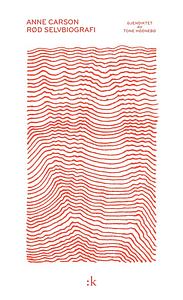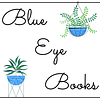Take a photo of a barcode or cover
I freaking love this book, so nuanced and so thought through. Anne Carson is a specialist in ancient Greek, it shows, and the view she suggests of the myth of Herkules is extremely interesting. Changing our point of view can be so useful!
Lo hermoso de las imágenes y lo creativo del lenguaje casi hacen que no se necesite una trama. Sólo casi, y a mí me faltó.
emotional
sad
fast-paced
Plot or Character Driven:
Character
Strong character development:
Complicated
emotional
funny
hopeful
reflective
medium-paced
Plot or Character Driven:
Character
Strong character development:
Yes
Loveable characters:
Yes
Diverse cast of characters:
Complicated
Flaws of characters a main focus:
Yes
4.5 stars rounded down. Despite this book's gorgeous prose, the plot peters out too much in the second half. That said, the more I waffled between a 4 and a 5, the more I realized that I won't be able to get this strange, unsettling, beautiful little book out of my head for a long time.
I'd never heard of the Greek myth of Geryon, as originally told by a poet named Stesichoros. Geryon is a red, winged creature that owns a herd of equally red cattle and lives with his beloved red dog on the island of Erytheia (literally "Red Island" or "Red Isle"). Maybe those familiar with this myth know that Herakles—"Heracles," if you're as slow to realize the alternate spelling as I was!—must steal Geryon's cattle as part of his twelve labors. Tragedy, as it so often does, ensues.
But to my surprise, Autobiography of Red wholly reimagines this ancient myth into a modern-day setting, replete with chain-smoking mothers, midnight rendezvous on train tracks, Quechuan gods slotted alongside bumpy car rides, and a camera that Geryon brings with him on his far-flung travels. The titular autobiography is the collection of photos that Geryon develops throughout his life, along with some frighteningly prescient writings from his childhood. The tragedy of Geryon's life comes not from some epic battle with Herakles, but from their charged relationship, in which one always seems to be testing the other, seeing how far they can go before they shatter.
However, the "autobiography" here is not just that of Geryon. It also encompasses that tricky color, red. Fear, warning, embarrassment, love, power, blood, lust, and shame—all words tinged with red, at least in Western cultures, and all things that Geryon experiences throughout his unconventional life as a monster/god?/winged creature. The photos tell the story of red, both the noun and the adjective—those words which are "the latches of being," as Carson writes, and the very ways in which she and Stesichoros undo the traditional myth of Herakles and his labor against Geryon and his redness.
The beauty of this book comes from Carson's prose, of course. Just gorgeous work. Below are some phrases that I read and re-read because I was so awestruck:
In a cheeky, thoughtful "interview" with Stesichoros, we learn that he "could not blink or the world went blind." In this same way, Carson has illuminated Geryon's life in ways that we have never seen before. What a story.
I'd never heard of the Greek myth of Geryon, as originally told by a poet named Stesichoros. Geryon is a red, winged creature that owns a herd of equally red cattle and lives with his beloved red dog on the island of Erytheia (literally "Red Island" or "Red Isle"). Maybe those familiar with this myth know that Herakles—"Heracles," if you're as slow to realize the alternate spelling as I was!—must steal Geryon's cattle as part of his twelve labors. Tragedy, as it so often does, ensues.
But to my surprise, Autobiography of Red wholly reimagines this ancient myth into a modern-day setting, replete with chain-smoking mothers, midnight rendezvous on train tracks, Quechuan gods slotted alongside bumpy car rides, and a camera that Geryon brings with him on his far-flung travels. The titular autobiography is the collection of photos that Geryon develops throughout his life, along with some frighteningly prescient writings from his childhood. The tragedy of Geryon's life comes not from some epic battle with Herakles, but from their charged relationship, in which one always seems to be testing the other, seeing how far they can go before they shatter.
However, the "autobiography" here is not just that of Geryon. It also encompasses that tricky color, red. Fear, warning, embarrassment, love, power, blood, lust, and shame—all words tinged with red, at least in Western cultures, and all things that Geryon experiences throughout his unconventional life as a monster/god?/winged creature. The photos tell the story of red, both the noun and the adjective—those words which are "the latches of being," as Carson writes, and the very ways in which she and Stesichoros undo the traditional myth of Herakles and his labor against Geryon and his redness.
The beauty of this book comes from Carson's prose, of course. Just gorgeous work. Below are some phrases that I read and re-read because I was so awestruck:
-He lay very straight in the fantastic temperatures of the red pulse as it sank away and he thought about the difference between outside and inside.
-Not touching but joined in astonishment as two cuts lie parallel in the same flesh.
-The fantastic fingerwork of his wings is outspread on the bed like a black lace map of South America.
-Herakles' gaze on him was like a gold tongue. Magma rising.
-And now time is rushing toward them where they stand side by side with arms touching, immortality on their faces, night at their back.
In a cheeky, thoughtful "interview" with Stesichoros, we learn that he "could not blink or the world went blind." In this same way, Carson has illuminated Geryon's life in ways that we have never seen before. What a story.
I feel like im not smart enough to fully understand. but it was beautifully written. will be looking for more Anne Carson books in the future. Quick read though!
3.75
Ci sono così tanti livelli di lettura per questo libro (il mito attualizzato, l'omosessualità, la percezione del sé, il trauma, le gabbie mentali, il tempo) da aggiungere all'analisi del lessico poetico e alla lettura generale della trama, dai quali il mio cervello ne è uscito stimolato come non mai, ma esausto.
Questo ha influito sul godimento generale dell'opera, che, ciliegina sulla torta, ho voluto leggere pure in lingua originale (obbligatorio in poesia secondo me).
Detto ciò, me ne pento? assolutamente no; mi identifico -forse un po' troppo- nel piccolo mostro che sarebbe dovuto morire per mano di Ercole? forse si o forse si.
Ci sono così tanti livelli di lettura per questo libro (il mito attualizzato, l'omosessualità, la percezione del sé, il trauma, le gabbie mentali, il tempo) da aggiungere all'analisi del lessico poetico e alla lettura generale della trama, dai quali il mio cervello ne è uscito stimolato come non mai, ma esausto.
Questo ha influito sul godimento generale dell'opera, che, ciliegina sulla torta, ho voluto leggere pure in lingua originale (obbligatorio in poesia secondo me).
Detto ciò, me ne pento? assolutamente no; mi identifico -forse un po' troppo- nel piccolo mostro che sarebbe dovuto morire per mano di Ercole? forse si o forse si.
a smoking crimson dreamscape, disordered and irresistible — a hot flash, sudden and swirling. Anne Carson’s work is severe in all the best ways and I will always adore her sheer audacity.
“who can a monster blame for being red?”
“there is no person without a world.”
“Geryon’s life entered a numb time, caught between the tongue and the taste.”
“who can a monster blame for being red?”
“there is no person without a world.”
“Geryon’s life entered a numb time, caught between the tongue and the taste.”
A beautiful story written in verse. Anne Carson has a magical way with words.





